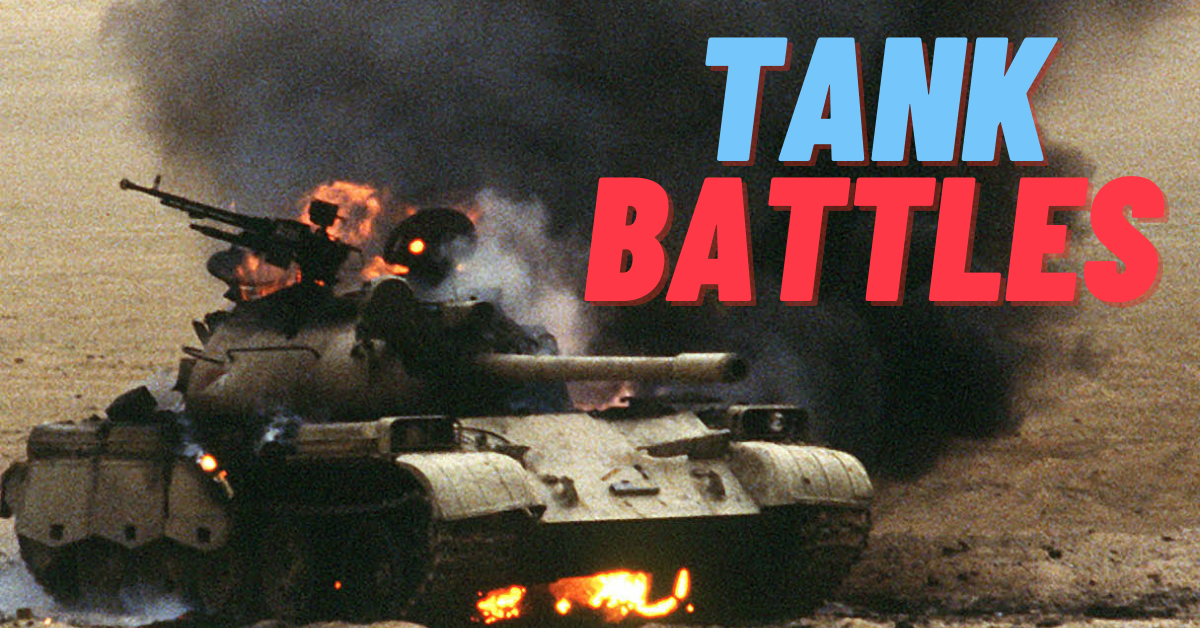Tanks have only been a tool of war since WWI when the British first deployed their slow, heavy yet powerful steel beasts. Despite their relatively short existence, there have been a number of legendary tank clashes.
This list includes some of the past century’s most important, impressive, and biggest tank battles. They are ranked in no particular order.
The Battle of Cambrai – 1917
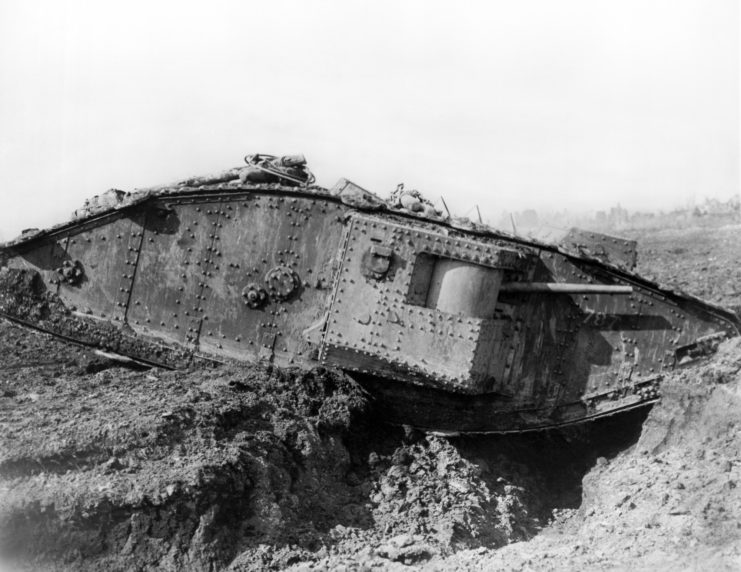
Although the Battle of Cambrai did not see epic tank-on-tank engagements, it was extremely important for the future use of tanks. The battle took place during WWI, from 20 November to 7 December 1917. The British launched a massive attack against the German Hindenburg Line, a few miles from Cambrai, France, with nineteen divisions and five horsed cavalry divisions.
In addition, the British employed the first large-scale use of tanks; 476 of them in total. On the first day of the battle, the tanks smashed through the German lines, taking thousands of prisoners in exchange for very little losses. Unfortunately, the attack would bog down and the British failed to successfully exploit the holes breached by the tanks. Although the operation took a turn for the worst, it proved that tanks were a vital asset on the battlefield, which still stands true today.
The Valley of Tears – 1973
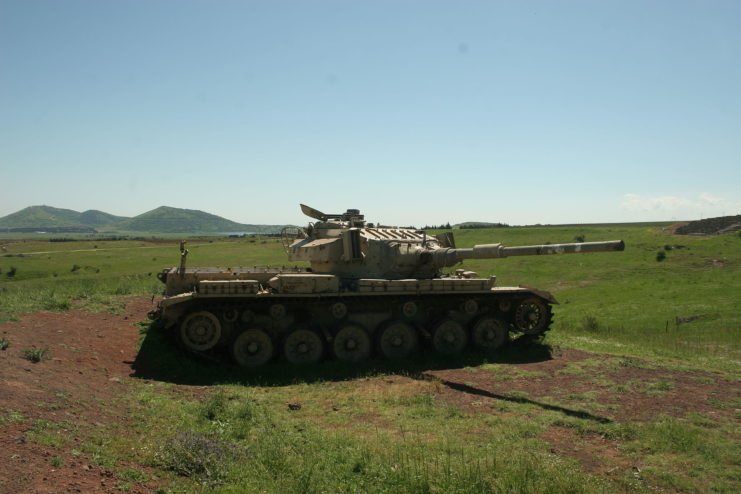
This battle happened during the 1973 Yom Kippur War, and is one of history’s greatest displays of armored defenses in action.
When the war began, Israel occupied the Golan Heights, enforcing it with around 170 tanks. The force was limited in size as to not provoke Syria. However, Syria attacked anyway and threw five divisions at the Israeli defenses. 1,400 Syrian tanks rolled towards the Golan Heights, which was protected by the small force of modernized Centurion and M48 Patton tanks. The Israeli tanks put up a valiant stand against the numerically and technically superior forces, knocking out tank after tank.
By October 9 the number of Israeli tanks had been reduced to just six, with only a few rounds left each. The Syrians continued to attack, almost emerging victorious. However, just as the final remaining Israeli tanks ran out of ammunition, a makeshift group of 15 Israeli tanks arrived as reinforcements. Although this was the extent of the relief force, the Syrians believed it was the first of a major reinforcement effort and retreated.
The Battle of 73 Easting – 1991
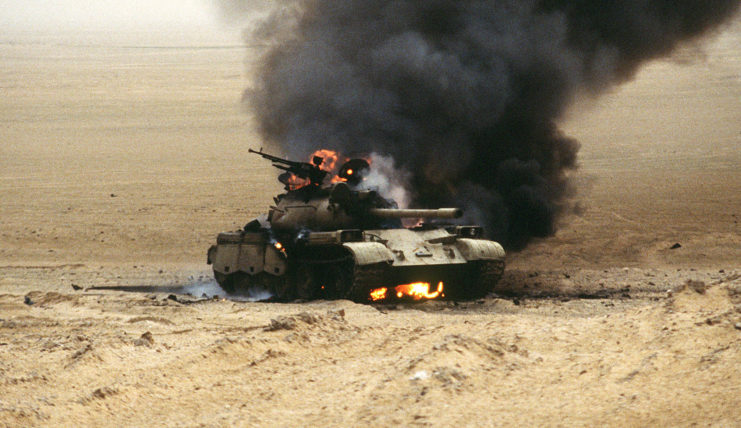
Dubbed “the last great tank battle of the 20th century,” the Battle of 73 Easting was a devastating display of what superior training and technology can do to an unprepared enemy. In February 1991 a small number of US tanks from the 2nd Armored Cavalry Regiment (ACR) engaged with a large force from Saddam Hussein’s elite Republican Guard, annihilating them.
Iraq invaded Kuwait in late 1990, which set the stage for the Gulf War. Early in 1991 coalition forces entered Iraq after a five-week aerial bombardment of Iraqi forces, which severely reduced their capacity to fight. After US forces destroyed most of an Iraqi Republican Guard division’s scouting abilities, they stumbled across their dug-in tanks, catching them completely off guard.
Eagle Troop of the 2nd ACR, led by Herbert McMaster, charged into the enemy position with their M1A1 Abrams tanks. After just over 20 minutes of ferocious combat, fifty Republican Guard tanks were destroyed, along with forty trucks and twenty-five armored personnel carriers. This was achieved without the loss of a single US tank.
The Battle of Chawinda (1965)
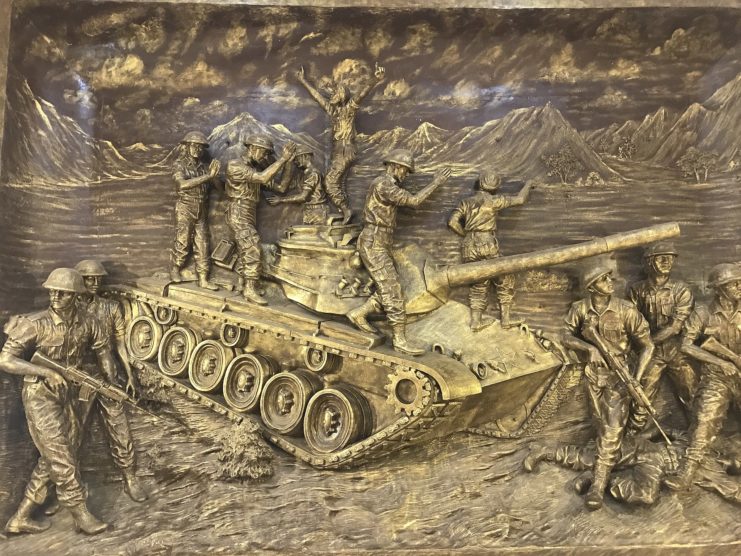
The Battle of Chawinda saw Pakistan and Indian tanks clash during the 1965 Indo-Pakistani War. Indian forces attempted to stop Pakistan’s access into Jammu and Kashmir and also encircle the city of Sialkot. Pakistan fielded around 130 tanks while India had over 220.
After a day of back and forth battles, India managed to push Pakistan’s forces back to Chawinda. They were severely outnumbered by the Indians at almost ten to one, but established defensive positions and were reinforced by troops from Kashmir.
Pakistani and Indian tanks battled it out, while Pakistani aircraft offered assistance. After suffering heavy losses, India retreated and the two nations agreed to a ceasefire.
The Battles of Kursk – 1943
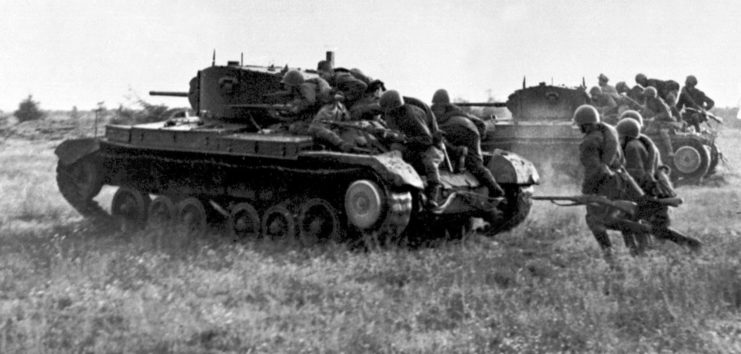
When it comes to tank battles, the Battle of Kursk is king. Although it was not a single tank battle as is often assumed, the Battle of Kursk pit simply enormous amounts of armored vehicles against each other. It was Germany’s final attempt to regain the upper hand on the Eastern Front and was a huge gamble. Germany built up its forces for battle over a period of months. This time allowed the Soviets to build a formidable network of defenses to slow down the offensive.
More From Us: Battle of Medina Ridge: One of the Largest Tank Battles in US History
Between July and August 1943, 3,000 German tanks and nearly 1 million troops battled twice as many tanks and 2 million Soviet troops. The tank engagements were fierce, with Soviet tanks quite literally swarming the superior but less numerous German vehicles.
Eventually, the Soviets emerged victoriously. German forces inflicted major damage to Soviet forces, but the Soviets were able to replace those losses. By the end of the battle, Germany had lost around 600 tanks, while the Soviets lost around 6,000.
